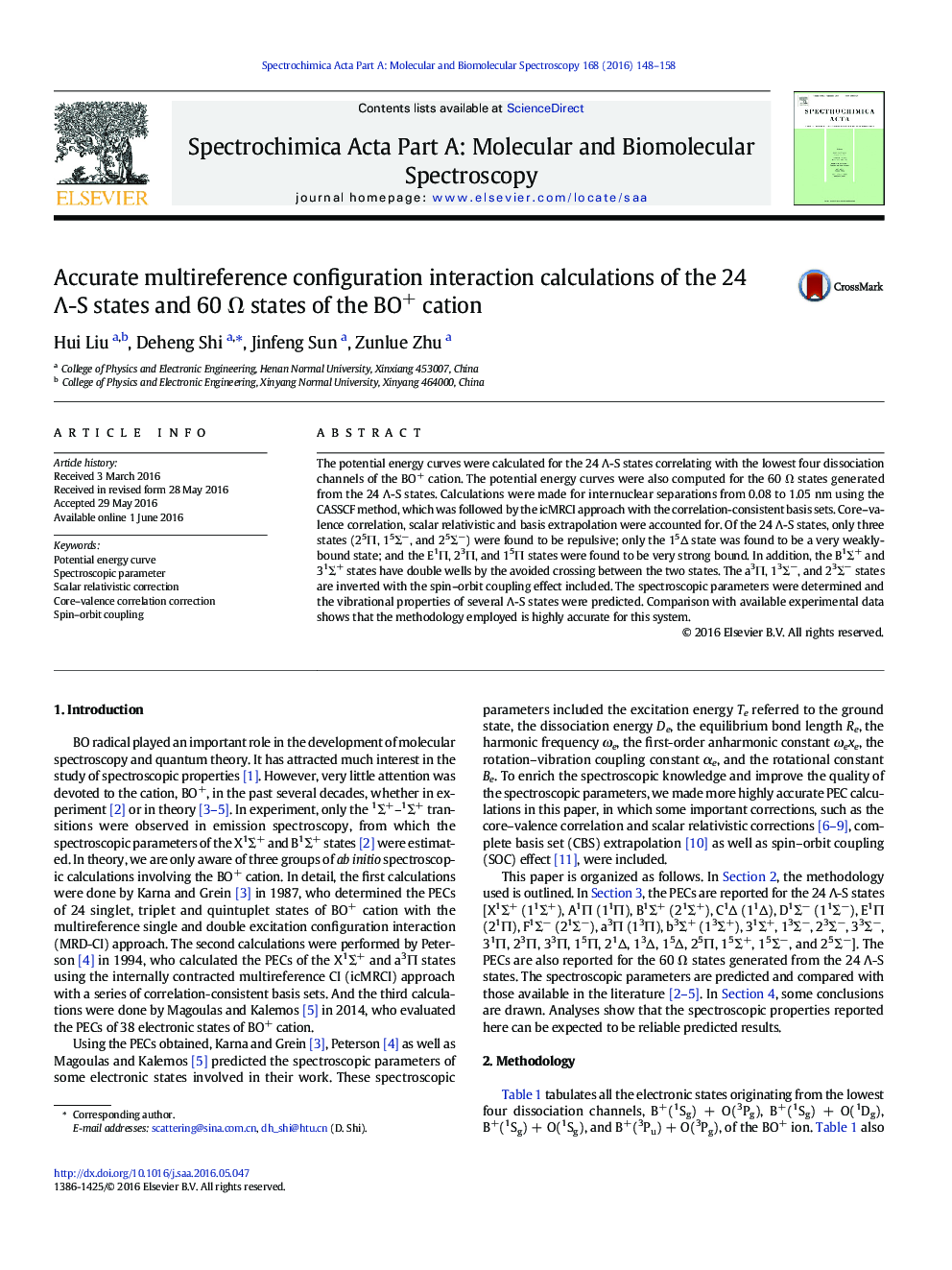| Article ID | Journal | Published Year | Pages | File Type |
|---|---|---|---|---|
| 1230420 | Spectrochimica Acta Part A: Molecular and Biomolecular Spectroscopy | 2016 | 11 Pages |
•Effect of core–valence correlation and scalar relativistic corrections is included.•PECs are extrapolated to the CBS limit.•Spectroscopic properties of 24 Λ-S states and 60 Ω states are studied.•SOC effect on the spectroscopic parameters is discussed.•Vibrational properties of some states are evaluated.
The potential energy curves were calculated for the 24 Λ-S states correlating with the lowest four dissociation channels of the BO+ cation. The potential energy curves were also computed for the 60 Ω states generated from the 24 Λ-S states. Calculations were made for internuclear separations from 0.08 to 1.05 nm using the CASSCF method, which was followed by the icMRCI approach with the correlation-consistent basis sets. Core–valence correlation, scalar relativistic and basis extrapolation were accounted for. Of the 24 Λ-S states, only three states (25Π, 15Σ−, and 25Σ−) were found to be repulsive; only the 15Δ state was found to be a very weakly-bound state; and the E1Π, 23Π, and 15Π states were found to be very strong bound. In addition, the B1Σ+ and 31Σ+ states have double wells by the avoided crossing between the two states. The a3Π, 13Σ−, and 23Σ− states are inverted with the spin–orbit coupling effect included. The spectroscopic parameters were determined and the vibrational properties of several Λ-S states were predicted. Comparison with available experimental data shows that the methodology employed is highly accurate for this system.
Graphical abstractThe PECs were calculated for the 24 Λ-S states and 60 Ω states for internuclear separations from 0.08 to 1.05 nm using the CASSCF method, which was followed by the icMRCI approach with the correlation-consistent basis sets. Core–valence correlation, scalar relativistic and basis extrapolation were accounted for. Of the 24 Λ-S states, only the 25Π, 15Σ−, and 25Σ− states were found to be repulsive; only the 15Δ state was found to be a very weakly-bound state; and the E1Π, 23Π, and 15Π states were found to be very strong bound. In addition, the B1Σ+ and 31Σ+ states have double wells by the avoided crossing between the two states. The a3Π, 13Σ−, and 23Σ− states are inverted with the SOC effect included. The spectroscopic parameters were determined and the vibrational properties of several Λ-S states were predicted. Comparison with available experimental data shows that the methodology employed is highly accurate for this system.Figure optionsDownload full-size imageDownload as PowerPoint slide
